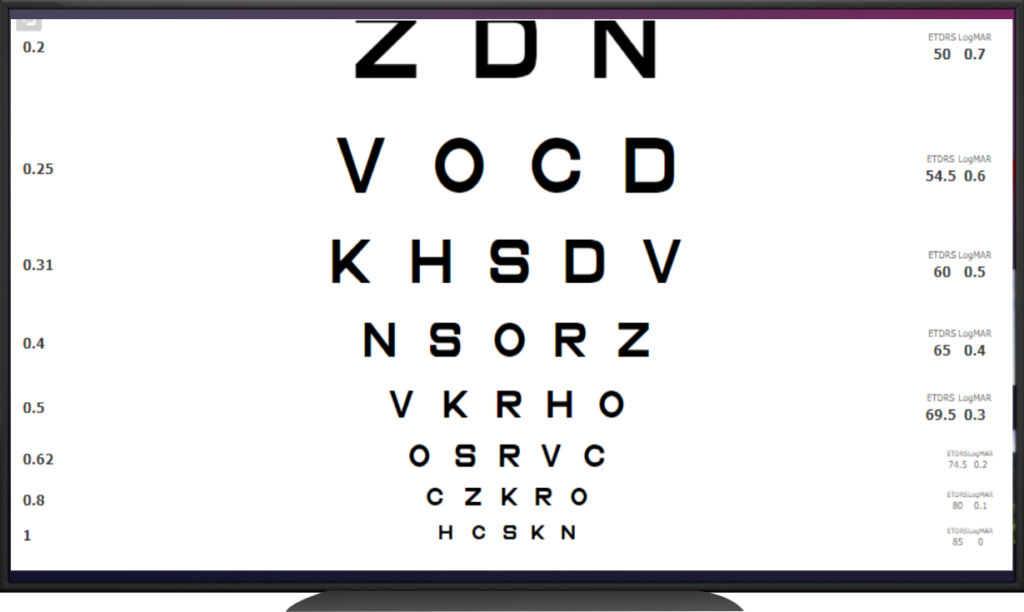The ETDRS (Early Treatment Diabetic Retinopathy Study) chart is a widely used tool in eye examinations to measure visual acuity, or the clarity of vision. This tool is specifically designed to monitor diabetic retinopathy, a common complication of diabetes that affects the eyes.
The ETDRS chart is a standardized test chart that is used to measure visual acuity. It consists of rows of letters of various sizes, arranged in descending order from large to small. The patient is asked to read the letters from a specific row, starting with the largest and moving to the smallest. The smallest row of letters that the patient can read accurately is recorded as their visual acuity.
The ETDRS chart is designed to be easy to use and interpret. The letters are in a standard font, and the lighting and background are standardized to minimize variations between testing environments. Additionally, the chart is designed to be self-correcting, meaning that if the patient cannot read a smaller letter, they are prompted to read the next larger letter instead.
The ETDRS scale
The standard visual acuity measurement uses the relative visual resolutions among different distances. For example, a visual acuity of 20/20 is considered normal, while a visual acuity of 20/40 indicates that the patient can read at 20 feet what a person with normal vision can read at 40 feet.
The ETDRS scale is a system for recording and reporting visual acuity measurements. It ranges from 0 (no light perception) to 100 (normal vision), with lower numbers indicating worse vision.
In addition to measuring visual acuity, the ETDRS scale can also be used to monitor changes in vision over time. This is particularly useful for patients with diabetes, as diabetic retinopathy can cause progressive vision loss. Regular eye examinations using the ETDRS chart and scale can help detect early signs of diabetic retinopathy and allow for timely treatment to prevent further vision loss.
The ETDRS scale is based on the logMAR scale, which is a commonly used method for expressing visual acuity. The term LogMAR is an acronym for the Logarithm of the Minimum Angle of Resolution. LogMAR charts have a number of advantages over Snellen charts and have become the gold standard method for assessing visual acuity.
The letter size is described in LogMAR units where LogMAR 0.00 is equivalent to 6/6 (20/20) in snellen scale or 85 ETDRS letter Score. LogMAR 1.00 is equivalent to 6/60 (20/200) in Snellen scale and 35 in ETDRS letter Score. The letter size change in units of 0.1 LogMAR from one row to the next.

In EyeCharts Visual Acuity software for Smart TV’s you have all types of visual acuity assessment scales, including an ETDRS scale
Conclusion
In summary, the ETDRS chart and scale are important tools in eye examinations for measuring and monitoring visual acuity. They are particularly useful for patients with diabetes and can help detect early signs of diabetic retinopathy. Regular eye examinations using the ETDRS chart and scale can help protect vision and ensure timely treatment.”



